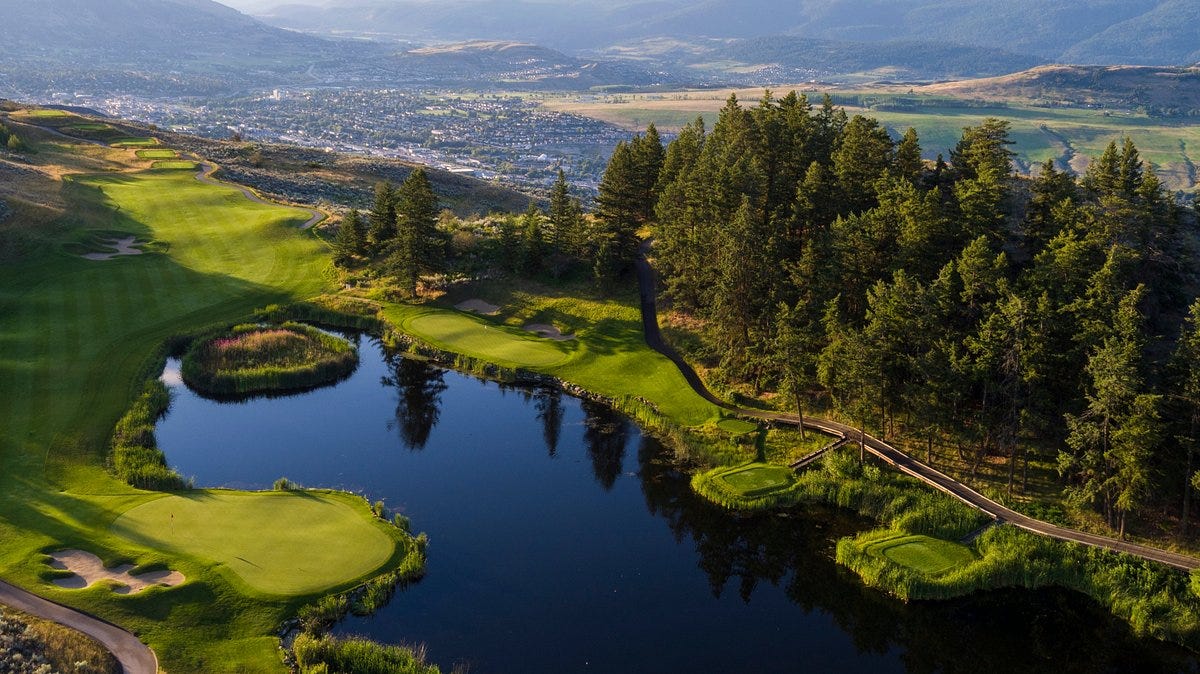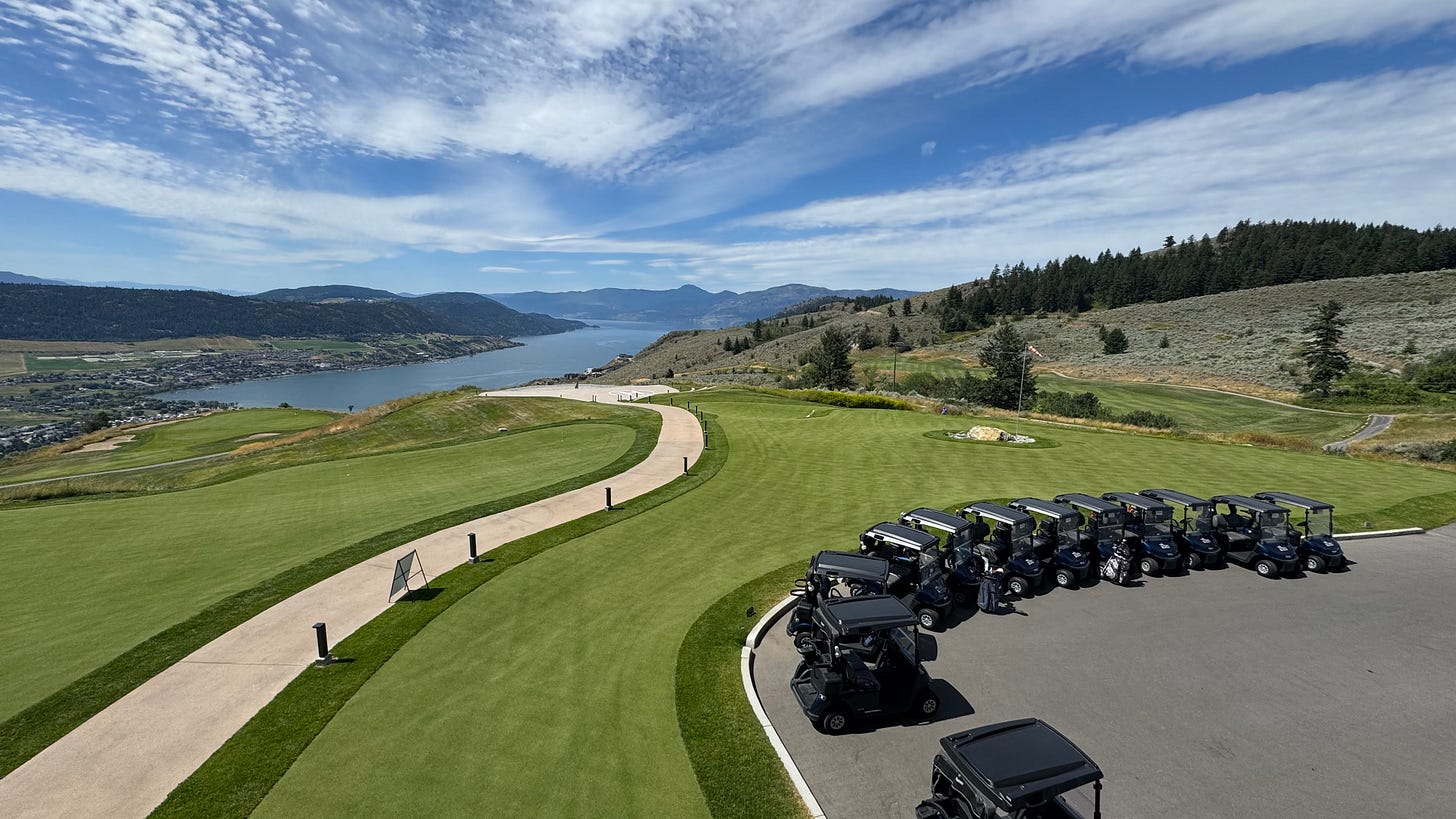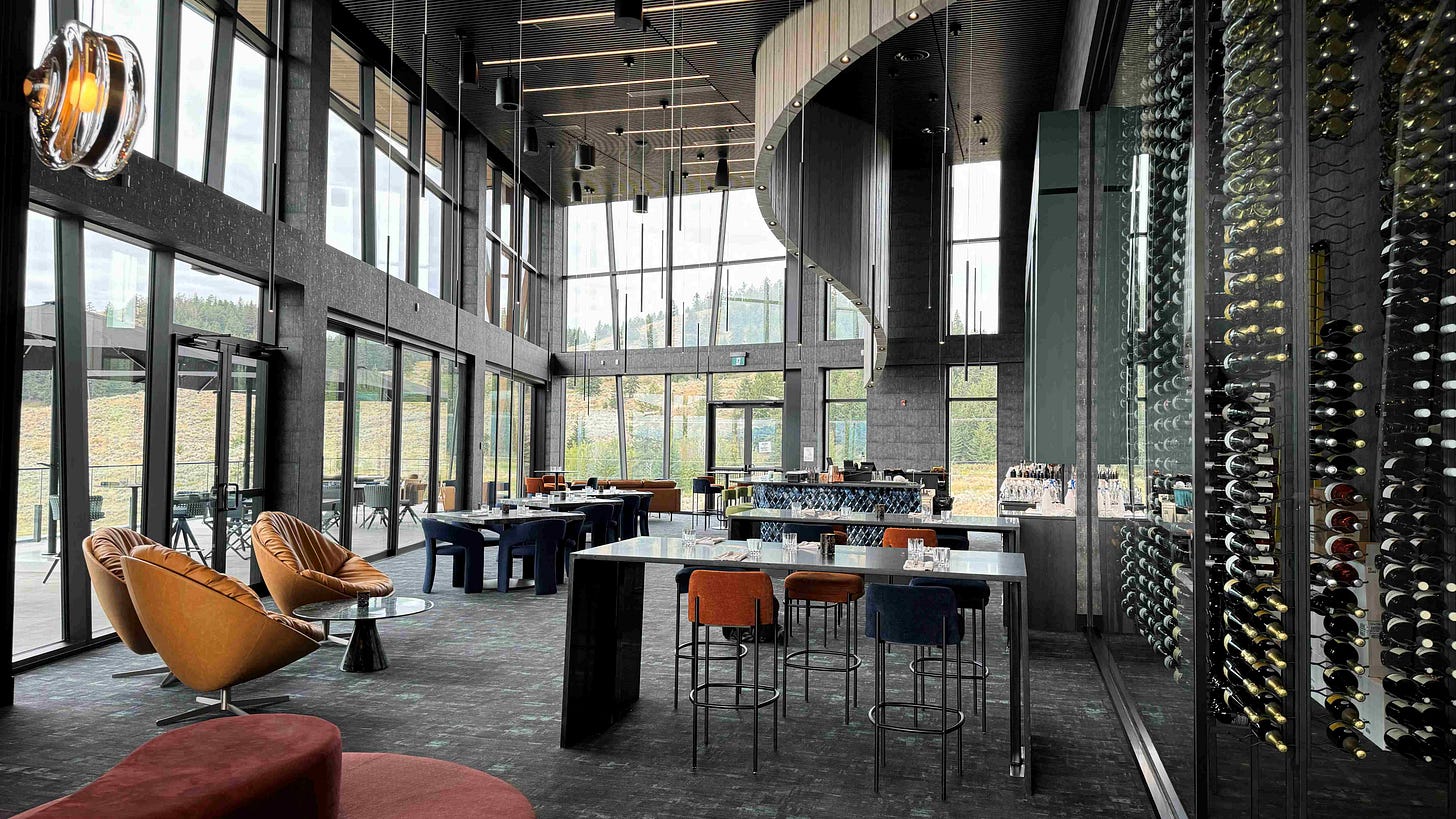Golf at Altitude: Playing The Rise in the Okanagan
A course that swaps predictability for theatre, with views so good they almost distract you from the punishment.
Advertising, Partnerships, or PR Inquiries | Archive
Back in July, I took a golf trip with friends and family to British Columbia, Canada. Specifically, Vancouver, Kelowna, and Vernon. It was a large group of mixed ages and abilities, and definitely a lot of fun. I wanted to share some of that experience for anybody thinking about a golf trip in that area.
Golf in the Okanagan is never short on options, but many valley courses sit comfortably beside vineyards, scenic without ever feeling overly dramatic. Drive north into Vernon and climb into the hills, and the experience shifts entirely.
The Rise doesn’t rest quietly on the land; it dominates it, pulling you higher until the valley shrinks below. From the very first moment, it feels less like a golf course and more like a stage built for spectacle.
The first thing you notice is the clubhouse. Glass and timber cut sharply against the hillside, perched like a lookout over the valley, it feels more like a contemporary resort than a golf facility. The Edge restaurant glows behind its thirty-foot windows, and the multi-level patios spill down toward the entrance. It’s stunning, and it tells you immediately that The Rise is playing on a bigger stage.
The second thing you notice, as you step out to the patio or walk toward the first tee, is the view. Okanagan Lake stretches out below like a mirror, silver in the morning and deep blue by afternoon, and you realise this isn’t going to be a standard round. The setting becomes part of every swing: twelve holes give you direct sightlines to the water, and even when you’re tucked into the trees, the altitude never lets you forget where you are.
Only then does the course reveal itself, and it doesn’t do so gently. Designed by Fred Couples and Gene Bates, The Rise is mountain golf in every sense, fairways that tilt away, approaches that climb or plunge, and greens that rarely reward anything casual. It can feel punishing for novices, even from the forward tees, because the terrain exposes every hesitation. For experienced players, it’s compelling theatre, for casuals, it’s a test of patience, but nobody leaves indifferent.
Follow me for more updates on LinkedIn | Instagram | X
The clubhouse experience feels luxurious. The Edge restaurant leans on local produce and a refined service, the pro shop feels carefully built rather than just functional, and Dante’s Golf Lounge (we didn’t use) adds a modern twist with simulator bays that keep competition alive when daylight fades. This isn’t an afterthought clubhouse; it’s part of the reason to come.
Staff are equally tuned into the challenge. Advice at check-in is delivered with a smile and some useful course info: where to aim on blind tee shots, which bold lines aren’t worth chasing, and how to approach certain greens that break harder than they look. In mountain golf, local knowledge can be a matter of survival, and here it’s shared generously, which makes the experience feel less intimidating, even when the course bites.
The putting and short-game areas are sharp enough to give you a feel for the surfaces. But in reality, once you’re on the first tee, any practice thoughts vanish; the mountain takes hold, and the course itself becomes the lesson. At least for me, anyway.
You’re not walking this course. The climbs are relentless, the gaps between holes stretch across the hillside, and the cart isn’t a luxury; it’s the only way to play. That’s not a drawback; it lets you absorb the views, catch your breath, and reset between holes. Minimalist purists might grumble, but this is golf designed for spectacle, and the cart frees you to lean into it.
The round itself swings between adrenaline and frustration. Drives hang forever against the backdrop of the lake, approaches demand conviction when elevation scrambles your numbers, and greens which appear gentle from afar reveal their subtle breaks up close.
For the novice golfer, your scores will rise faster than you would like, and expect to lose a few balls, but the memories that stick aren’t numbers on a card, they’re the moments of acheivement: the bravery of a drive onto a sloping fairway, the blind 6 iron that turns out safe, and those moments everyone stops to stare at the view instead of their ball.
That’s what The Rise delivers. It doesn’t aspire to be easy or fair; it aspires to be unforgettable. Some golfers will love the theatre, others will feel the difficulty overwhelms the fun, but all will remember it. Courses that stay with you aren’t always the most polished; they’re the ones that insist on being felt, and The Rise fits that description perfectly.
So if you make the trip, do it with clear eyes. Pick the right tees, accept that the mountain and blind holes will add to your score, and don’t fight it. Then leave time to sit on the patio at The Edge, drink in hand, as the lake changes colour below.
Because The Rise isn’t just another Okanagan course, it’s golf staged as a performance, and the curtain lifts the moment you see that clubhouse.
Thanks for reading. If you hit the like button, you’ll be doing me a huge favour.
If you know someone who will enjoy this article, please share it with them.








We had a memorable day at The Rise with challenges and rewards in abundance.
Great experience and a Clubhouse to enjoy the beautiful views.